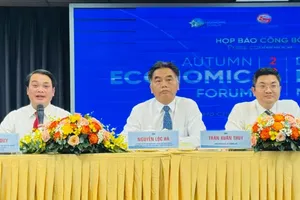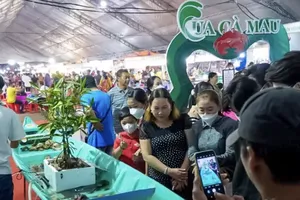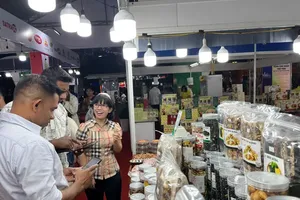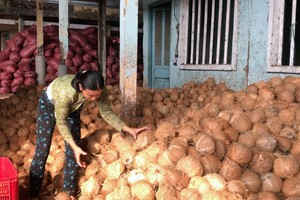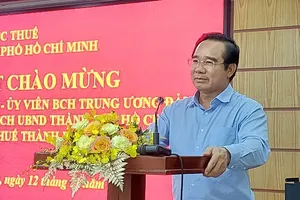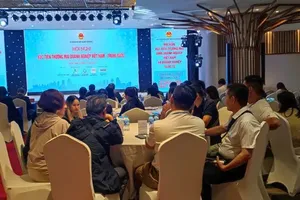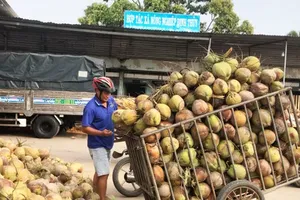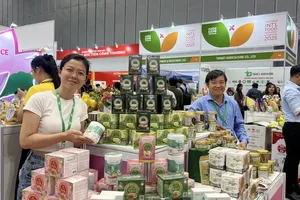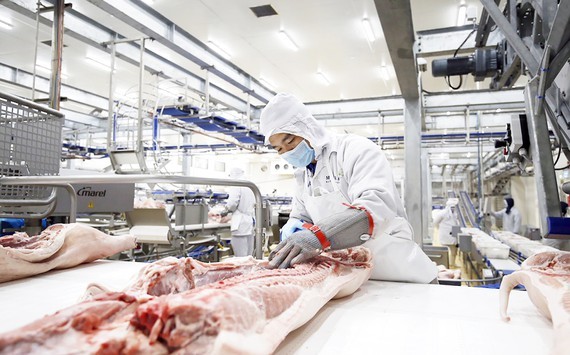
According to the Ministry of Agriculture and Rural Development, in the period from 2013 to 2018, the agricultural product processing industry had developed strongly with annual value growth of 5-7 percent. Export accounted for about 65 percent of the total processed value. Currently, there are around 7,500 agricultural product processing and preserving facilities for export across the country. In 2018 and 2019, 30 processing projects with total investment capital of around US$1 billion have started construction and some facilities have been put into operation. Of which, Intimex Group inaugurated its $30-million instant coffee processing plant with an annual estimated capacity of 4,000 tons in late-December last year.
‘Through this investment, we expect to meet the rising demand of customers, thereby increasing the competitiveness and the value-added of Vietnamese coffee products in the global market and heading to sustainable export at the same time,’ said Mr. Do Ha Nam, Chairman of Intimex Group. He added that this year, the group will continue to expand the plant for it to reach an annual capacity of 20,000 tons with total investment capital of $100 million.
Phuc Sinh Joint Stock Company also invested in modern equipment to process freeze-dried peppercorns whose value is six times higher than that of black peppercorns.
This year, TH Group will complete the second phase of the pure water, herbal and fruit juice processing plant, build the production line of fruit juices with a capacity of 36,000 bottles per hour and produce new product lines, including rice milk, red rice milk, and fruit juices.
After its presence in the Northern market, Masan MEATLife Joint Stock Company has been building a complex to process clean pork in Long An Province to serve the Southern market with total investment for the first stage at around VND1.3 trillion. The plant is expected to operate in August this year.
Specializing in exporting fresh coconuts to the US market, the Vina T&T Group has also planned to start construction of a fresh coconut processing plant in May this year and coconut husks will be milled to make organic fertilizer.
In March this year, Viet-Uc Seafood Corporation will also begin construction of a shrimp processing plant in the high-quality shrimp production complex in Bac Lieu Province.
San Ha Company recently opened a new store in Chau Thanh District in Long An Province, increasing the number of stores selling chicken products to 24.
According to Mr. Nguyen Quoc Toan, Director of the Agro Processing and Market Development Authority under the Ministry of Agriculture and Rural Development, by 2030, the price growth rate of processed agricultural products will reach 7-8 percent annually; the production proportion of intensively-processed products with high value-added of product lines will be 30 percent upwards; more than 50 percent of key export agricultural product processing facilities will reach the level of advanced production technology. Vietnam has built and developed successfully some large-scale, modern agro-forestry-aquatic product processing enterprises with high international competitiveness.
Besides investing in intensive processing technology, enterprises have also changed the awareness in food safety management and supervision, from checking final products to monitoring hazards in the entire production chain.
Mr. Willem Schoustra, Agricultural Counsellor of the Netherlands Embassy, said that investment in new technology and modern equipment is extremely important in cooperating and connecting partners in the development and supply chains.
Mr. Nguyen Quoc Toan said that if the agricultural industry is invested with intensive processing technology, it will create a very large space. Therefore, enterprises need to connect production in the agricultural product producing, processing and consuming value chain to increase the material supplying capacity for processing, ensuring the quantity, quality, and stability for products; monitor threats during the process of cultivation, harvest, and preservation. Upgrading technology and modernizing processing equipment to produce diverse products and lower cost prices, controlling quality, food safety and traceability, meeting standards of consumption markets and environmental protection are urgent requirements currently. Besides, it is essential to improve the quality of human resources in technology, market economy, and international economic integration.
However, the post-harvest processing technology of Vietnam mostly reaches the average and above-average level so competitiveness is not high. For instance, with sweet potatoes, South Korea can process them into 15 products whereas Vietnam can process only a few products. Vietnamese dragon fruits are preserved for 35 days after harvesting, of which transportation takes up to 30 days so their shelf life is only five days. With such a short shelf life, the value of dragon fruits is lowered. Or Vietnamese fresh coconuts have better quality than those of Thailand, but Thailand’s fresh coconuts are sold with ‘openers’ for direct use, so despite the higher price, they have been buying heavily because of convenience.
‘Through this investment, we expect to meet the rising demand of customers, thereby increasing the competitiveness and the value-added of Vietnamese coffee products in the global market and heading to sustainable export at the same time,’ said Mr. Do Ha Nam, Chairman of Intimex Group. He added that this year, the group will continue to expand the plant for it to reach an annual capacity of 20,000 tons with total investment capital of $100 million.
Phuc Sinh Joint Stock Company also invested in modern equipment to process freeze-dried peppercorns whose value is six times higher than that of black peppercorns.
This year, TH Group will complete the second phase of the pure water, herbal and fruit juice processing plant, build the production line of fruit juices with a capacity of 36,000 bottles per hour and produce new product lines, including rice milk, red rice milk, and fruit juices.
After its presence in the Northern market, Masan MEATLife Joint Stock Company has been building a complex to process clean pork in Long An Province to serve the Southern market with total investment for the first stage at around VND1.3 trillion. The plant is expected to operate in August this year.
Specializing in exporting fresh coconuts to the US market, the Vina T&T Group has also planned to start construction of a fresh coconut processing plant in May this year and coconut husks will be milled to make organic fertilizer.
In March this year, Viet-Uc Seafood Corporation will also begin construction of a shrimp processing plant in the high-quality shrimp production complex in Bac Lieu Province.
San Ha Company recently opened a new store in Chau Thanh District in Long An Province, increasing the number of stores selling chicken products to 24.
According to Mr. Nguyen Quoc Toan, Director of the Agro Processing and Market Development Authority under the Ministry of Agriculture and Rural Development, by 2030, the price growth rate of processed agricultural products will reach 7-8 percent annually; the production proportion of intensively-processed products with high value-added of product lines will be 30 percent upwards; more than 50 percent of key export agricultural product processing facilities will reach the level of advanced production technology. Vietnam has built and developed successfully some large-scale, modern agro-forestry-aquatic product processing enterprises with high international competitiveness.
Besides investing in intensive processing technology, enterprises have also changed the awareness in food safety management and supervision, from checking final products to monitoring hazards in the entire production chain.
Mr. Willem Schoustra, Agricultural Counsellor of the Netherlands Embassy, said that investment in new technology and modern equipment is extremely important in cooperating and connecting partners in the development and supply chains.
Mr. Nguyen Quoc Toan said that if the agricultural industry is invested with intensive processing technology, it will create a very large space. Therefore, enterprises need to connect production in the agricultural product producing, processing and consuming value chain to increase the material supplying capacity for processing, ensuring the quantity, quality, and stability for products; monitor threats during the process of cultivation, harvest, and preservation. Upgrading technology and modernizing processing equipment to produce diverse products and lower cost prices, controlling quality, food safety and traceability, meeting standards of consumption markets and environmental protection are urgent requirements currently. Besides, it is essential to improve the quality of human resources in technology, market economy, and international economic integration.
However, the post-harvest processing technology of Vietnam mostly reaches the average and above-average level so competitiveness is not high. For instance, with sweet potatoes, South Korea can process them into 15 products whereas Vietnam can process only a few products. Vietnamese dragon fruits are preserved for 35 days after harvesting, of which transportation takes up to 30 days so their shelf life is only five days. With such a short shelf life, the value of dragon fruits is lowered. Or Vietnamese fresh coconuts have better quality than those of Thailand, but Thailand’s fresh coconuts are sold with ‘openers’ for direct use, so despite the higher price, they have been buying heavily because of convenience.










